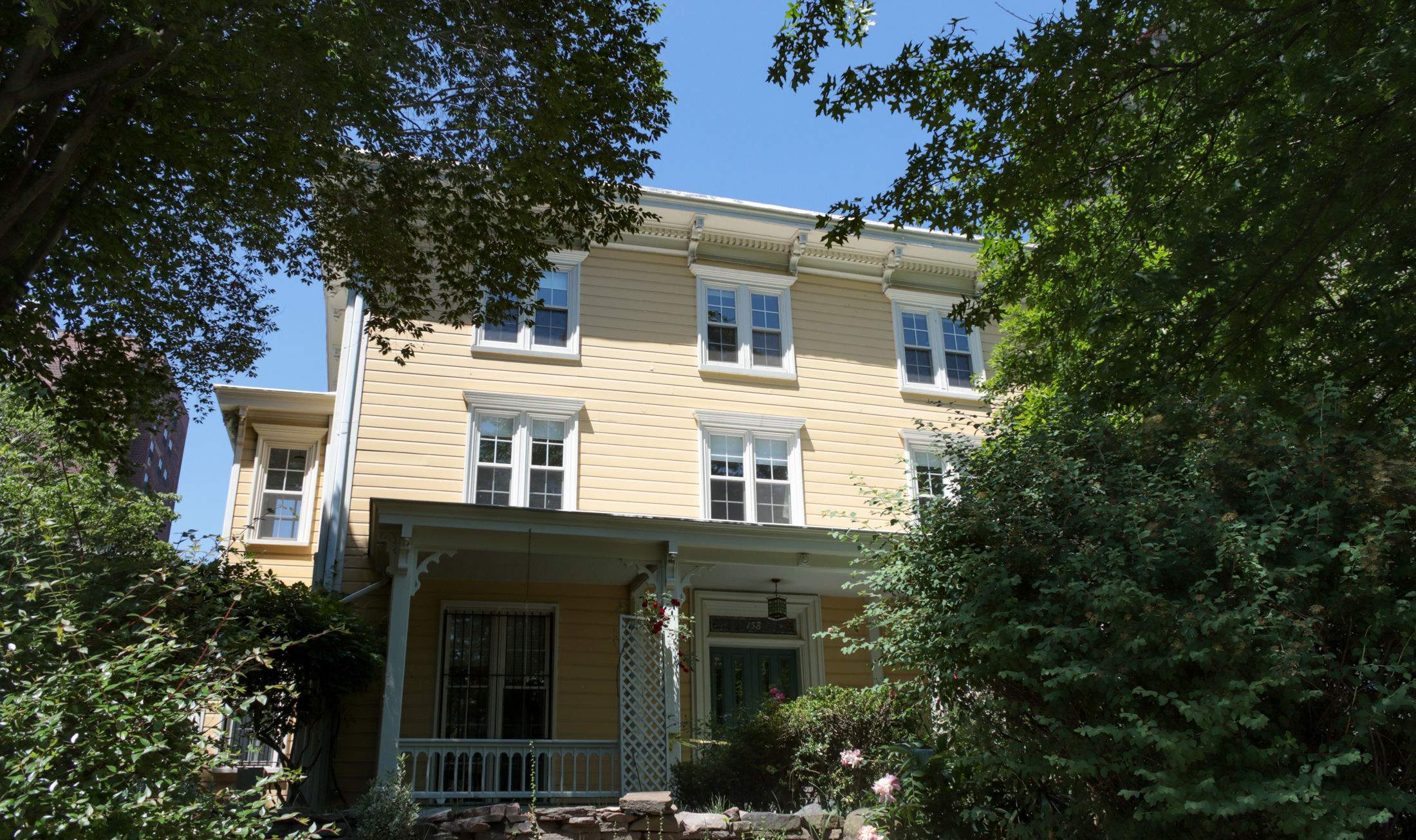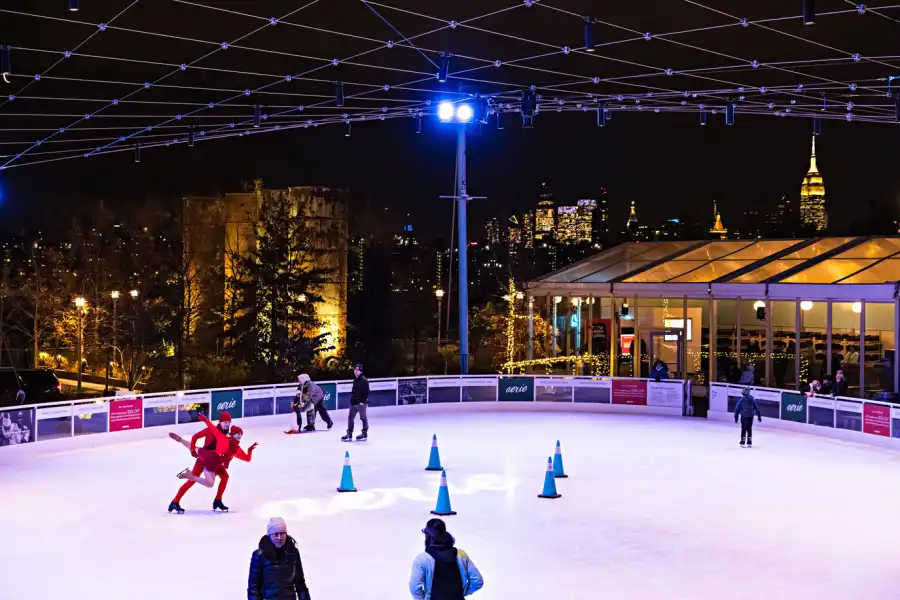Elevated Lead Levels in Kids at NYCHA Childcare Centers Raise Alarms
There were more cases in three months than there had been in two previous years. While a new more rigorous standard may take some blame, frustrated parents are still left with questions.

Entrance to the Brevoort Children’s Center in Bed Stuy within the Brevoort NYCHA complex. June 11, 2025. Photo by Shenal Tissera/ THE CITY
by Shenal Tissera
This article was originally published on July 2 at 5 a.m. EDT by THE CITY
Four children in three childcare centers in New York City Housing Authority complexes had elevated levels of lead in their blood in a three-month span between October 2024 and the beginning of January, according to a federal monitor’s latest report.
That compares to only three such cases across all NYCHA childcare centers in all of 2022 and 2023.
The childcare centers flagged by the monitor — at the Brevoort, Queensbridge South, and Sotomayor Houses in Bed Stuy, Queens, and The Bronx — temporarily closed down and underwent lead abatement immediately after receiving notifications about the lead-positive children, housing officials said.
The Queensbridge South daycare center, which was attended by two of the children with elevated lead levels, accounted for almost half of the 80 lead-positive components — including walls, doors, windows, radiators, and other parts — found by Health Department inspectors and contractors hired by NYCHA to check the sites.
Despite the four separate findings of elevated lead levels in kids in a three-month span, further testing of paint at the 139 other childcare centers inside of NYCHA won’t happen until the beginning of 2026 after already-in-progress lead inspections in all of its apartments are scheduled to be completed by the end of this year.
There are no safe levels of lead in the blood, experts warn. This is especially true for children, where even low levels of lead in their system are associated with developmental delays, difficulty learning, and behavioral issues, which can be permanent and disabling, according to the U.S. Centers for Disease Control and Prevention.
Historically, children living in NYCHA residences have consistently lower rates of elevated blood lead levels compared to those living in private housing citywide, which tends to be older.
In 2023, the rate of children less than 6 years old living in NYCHA housing with levels of lead in their blood at or above the federally designated threshold was 35% lower than the rate for children living in private housing citywide.
That threshold, 3.5 micrograms of lead per deciliter of blood, was lowered from 5 micrograms by the CDC in October 2021 and adopted by the city Department of Health and Mental Hygiene in October 2022.
According to the CDC, officials there changed the threshold to encourage both federal partners and local health departments across the country to focus on young children with the highest exposure to lead, allow for early intervention, and continue to further reduce blood lead levels.
Because NYCHA did not receive the precise blood levels from the DOH for privacy reasons, the housing authority cannot say with certainty whether the sudden uptick in lead-positive children at the centers was due to the threshold change or something else, according to the NYCHA monitor’s report.
Nationally, housing developments across the country have seen an increase in elevated blood lead levels (EBLLs) following the threshold change, according to the NYCHA monitor’s consulting lead expert.
Parents Frustrated by Runaround
For parents whose children were at the lead-positive centers, two of which are run by nonprofits in conjunction with New York City Public Schools, the lack of an emergency plan for childcare at those centers closed for abatement left them frustrated and even led one mom to lose her job.
“He kept complaining how he wanted to go to school and missed his teachers and friends and he was also missing out on his assignments,” said Audrey Warrick, the mother of 4-year-old Jaquan who goes to the Sotomayor childcare center. “He’s a little delayed in his learning.”
With a temporary childcare center only open for two weeks of the month that the Sotomayor center was closed and too far for Warrick, who has knee problems, to walk him there, the boy spent more than a month at home with his mother.
The time he missed at school was especially consequential because he has a learning disability and any delays in schooling at the childcare center becomes a major setback, Warrick said.
Another parent, Yusneidy Villa, whose son attends the Queensbridge South center, which is run by the nonprofit Police Athletic League, had to leave her job because the temporary center offered by PAL was too far away from her. The shelter she was staying in with her family at the time couldn’t take care of her son and she had no other family or friends in the area to help.
“I had a very bad time because here, one has to work to be able to survive because this is also an expensive country,” said Villa through a translator app in Spanish.
A PAL spokesperson declined to comment on the lead abatement at the center.
The workers at these sites became envoys between the several government agencies involved and the parents whose children were waiting in limbo, according to Chloe Pashman, an education director at one of the lead-positive early education centers who did not want her specific center location named in the story.
“We have 51 kids and 20 of them attended school for two weeks,” said Pashman regarding the period of lead abatement at the center. “That was their solution.”

Some parents felt pressured by DOE staff to switch their children to different centers altogether while the abatement took place. Warrick received a call from a man working at the DOE encouraging her to find a different place to send Jaquan considering the timetable for return was murky and kept changing at the time.
“That was the first daycare he started in … I didn’t want to place him in another daycare, but that was their option,” said Warrick. “He was already used to the kids and the teachers in the school.”
Instead of completely switching their kids to completely different childcare centers in the middle of the school year, parents wanted remote learning implemented in the interim.
Remote services can be provided in an emergency situation beyond the center’s control only at the direction of the city’s Department of Education, which they chose not to do in this situation.
Staff at the Sotomayor center said they were told by the DOE’s Deputy Chancellor of Early Childhood Education School Simone Hawkins if they went forth with remote learning, they would not be paid for their services.
Hawkins originally agreed to talk with THE CITY for the story but cancelled the interview, citing scheduling conflicts and did not reschedule.
Related Stories
- Trump Public Housing Time Limits Could Displace 300,000 NYC Residents, Internal Analysis Finds
- FEMA Grant Will Pay for Hurricane Sandy Repairs at Red Hook Houses
- Five Years Later, Still ‘A Long Way to Go’ on NYCHA Agreement With Feds
Email tips@brownstoner.com with further comments, questions or tips. Follow Brownstoner on X and Instagram, and like us on Facebook.





What's Your Take? Leave a Comment